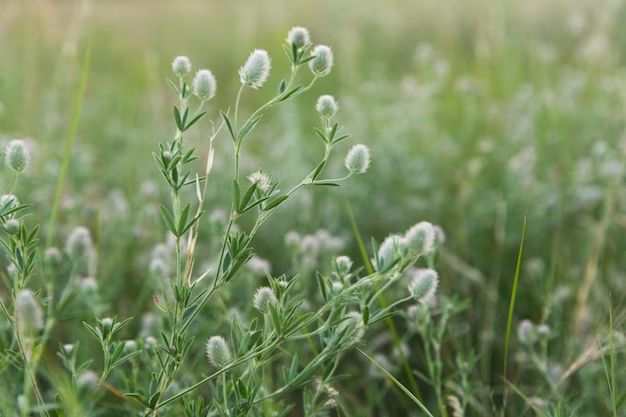Chickweed is a common weed that can quickly take over lawns and gardens during the summer months. While hand pulling is effective for small infestations, most homeowners need an integrated approach to get rid of chickweed in the summer. There are several methods that can be used together to control chickweed and prevent it from returning.
Page Contents
What is Chickweed?
Chickweed (Stellaria media) is a low-growing annual and perennial weed that forms dense mats. It has slender stems with pairs of oval, dark green leaves. Small white star-shaped flowers bloom in spring and fall. Chickweed grows best in cool, moist conditions but can thrive in summer as well. It spreads readily through its root system and seeds.
Why Get Rid of Chickweed
There are several reasons to get rid of chickweed in your lawn and gardens:
- It crowds out grass, flowers, vegetables and other desirable plants.
- It forms thick mats that choke lawns.
- It harbors other pests like slugs and snails.
- It spreads rapidly through seed dispersal.
- It looks unsightly.
- It indicastes overly wet soil conditions.
Controlling chickweed enables grass and plants to thrive and restores a neat appearance to the landscape.
How to Get Rid of Chickweed
An integrated approach using several methods together works best to get rid of chickweed. Persistence is key since chickweed grows quickly and produces many seeds that survive for several years.
Hand Pulling
Hand pulling chickweed is effective for very small infestations and young plants. Grab the base of the plant near the soil and pull steadily to remove the entire root system. Pulling often encourages new seeds to sprout, so continue monitoring the area. Always wear gloves when hand pulling weeds.
Hoeing
Use a hoe to slice chickweed off at soil level in lawns and gardens. Hoe every few days to control new seedlings. Apply a preemergent herbicide after hoeing to prevent new chickweed growth.
Mowing
Set the mower height high and mow frequently to prevent chickweed from going to seed. This won’t kill existing plants but helps control spread. Mow once a week during the growing season.
Vinegar
Spray full strength white or apple cider vinegar on chickweed to burn the leaves. This usually requires several applications. Vinegar also acidifies the soil to discourage future growth.
Boiling Water
Pour boiling water directly on chickweed clumps to kill them instantly. Take care not to burn yourself or harm nearby plants.
Landscape Fabric
Cover bare soil with landscape fabric to block light and prevent chickweed from sprouting. Use along fence lines, under decks and in other hard-to-reach areas.
Mulch
Apply 3-4 inches of mulch like wood chips, shredded leaves or straw around garden plants and in landscaped areas to block light from reaching chickweed seeds. The mulch also helps retain soil moisture.
Corn Gluten Meal
This organic herbicide applied in summer or early fall prevents chickweed seeds from germinating. It does not kill existing plants.
Preemergent Herbicides
Preemergent herbicides like prodiamine and pendimethalin create a chemical barrier to block weed seeds from sprouting. Apply in early spring according to label directions to prevent chickweed growth. Reapply every 2-3 months.
Postemergent Herbicides
Postemergent herbicides like 2,4-D, dicamba and triclopyr kill actively growing chickweed. Apply to young plants in spring or fall when the temperature is above 60 degrees Fahrenheit. More than one application is usually needed.
Natural Predators
Chickens will eat chickweed greedily and help control infestations. Consider temporary fencing to confine chickens to heavily infested areas.
When to Get Rid of Chickweed
The best times to get rid of chickweed are early spring before it flowers and sets seed, and early fall when new growth emerges. Ongoing removal is needed in summer to prevent chickweed from going to seed.
Spring
- Hand pull plants.
- Hoe vigorously to remove all growth.
- Apply preemergent herbicide.
- Spot spray small infestations with postemergent herbicide.
Summer
- Continue hand pulling and hoeing.
- Use vinegar or boiling water.
- Mow frequently.
- Mulch bare soil.
- Cover with landscape fabric.
- Spot spray with postemergent herbicide.
Fall
- Hand pull remaining plants.
- Apply corn gluten meal or preemergent herbicide.
- Spot treat with postemergent herbicide.
- Reseed treated lawns.
Chickweed Prevention
Preventing chickweed from growing in the first place is ideal. Try these proactive measures:
- Maintain a healthy, dense lawn through proper mowing, fertilization, watering, aerating and overseeding.
- Avoid overwatering and improve drainage in garden beds.
- Mulch bare soil to prevent light from reaching seeds.
- Use corn gluten meal or preemergent herbicide in spring and fall.
- Control chickweed in beds before it goes to seed.
- Clean up pulled plants immediately to prevent reseeding.
- Use chickweed-free seed mixes when planting lawns or wildflower areas.
Conclusion
Chickweed is a persistent nuisance weed that can take hold in lawns and gardens quickly. Controlling it requires diligence and using several methods together to deplete the seed bank in soil. Hand pull, hoe, mow, mulch, use herbicides and corn gluten meal to remove existing chickweed. Prevent it in future seasons by maintaining healthy turf, mulching, applying preemergent herbicide and improving drainage. With an integrated approach, you can get rid of troubling chickweed and keep it from returning.
